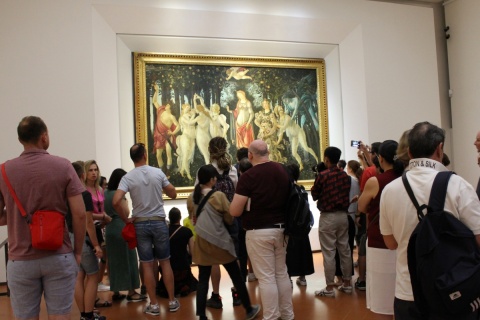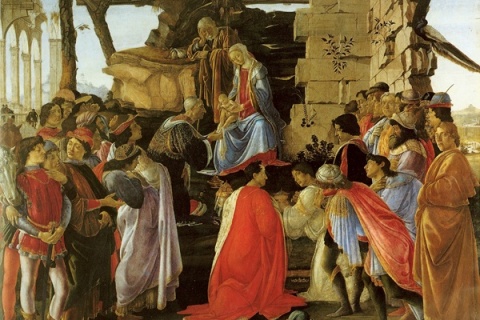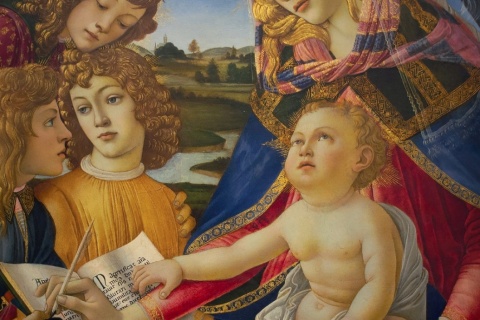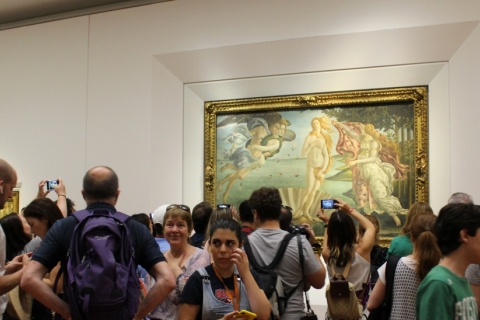Sandro Botticelli at the Uffizi Gallery of Florence
The Uffizi and Botticelli, the works exhibited in the museums which are symbols of an era
The Uffizi Gallery is one of the most important museums in the world, but also the Museum of Sandro Botticelli!
The Uffizi museum is based in the homonymous palace built by Giorgio Vasari in 1560 by commission of Cosimo I de Medici. It is divided in various rooms, artworks are shown in chronological order, from the XII to the 18th century. The Uffizi exposition is considered the best collection in the world of works by the Florentine Renaissance.
One of the artists symbol of the Uffizi Gallery is undoubtedly Sandro Botticelli. His masterpieces were merged in the rooms ranging from 10 to 14 and constitute the best collection in the world of this master.
Who was Sandro Botticelli
Sandro Botticelli was born in Florence in 1445 in Via Nuova (Today Via del Porcellana. He was the last of four male children, he grew in a modest family. Thanks to him's father, a wealthy skins tanner, the young Botticelli could follow literal and artistic studies. Its real apprenticeship took place in the workshop of Filippo Lippi from 1464 to 1467. All a series of madonners arose to this period. These reveal the direct influence of his master. Following this period Botticelli chose to open a workshop all over him and it is precisely in this period that he obtained great success as a painter entering the circle of the artists of the Medici family.
In 1472 Botticelli enrolled at the Academy of San Luca and becomes one of the favorite artists of Lorenzo the Magnificent, participating increasingly actively in court life and meeting the most eminent personalities of the time. In 1481 Botticelli was called, like other painters, by Pope Sisto IV to make the wall decorations of the Sistine chapel together with Ghirlandaio, Pinturicchio, Perugino and Cosimo Rosselli. Botticelli lived in Rome for a year to work for the Vatican and then came back to Florence to the Court of Medici. But Sandro Botticelli's life changed dramatically with the decline of the Medici in Florence when Savonarola came to power in 1494 . The artist at this time of his life put aside the mythological subjects to devote himself to sacred art.
In the last years of his life Botticelli fell into disgrace, his works lost value, far exceeded from those by Leonardo and Michelangelo, because they were too innovative and revolutionary for the period he was living. He died in 1510 isolated and in poverty. His artworks were completely forgotten for over three centuries, to be rediscovered only in the nineteenth century.
Botticelli 's masterpieces at the Uffizi Gallery
The allegory of spring of Botticelli
The Allegory of Spring (1475-1486) is, together with the Birth of Venus, certainly one of the most famous paintings of the whole museum. The painting represents allegorical subject and its meaning is not yet entirely revealed. In a shady grove of oranges, nine characters are moving, the sky is blue and the soil is composed of a green lawn scattered by an infinity of plant species and a very rich flowers samples. Reading the work from right to left we find Zefiro that reaches and embraces the nymph Chlori, She appears again to the left of the painting in the forms of Flora dressed in flowers. In the center of the scene, there are Venus and Cupid who laves the love dart. The Three Graces are on the left, they are dressed with transparent veils. Close to the group on the left there is a disinterested Mercury, with the typical winged shoes. Mercury leans the clouds to preserve an eternal spring. Scholars consider the work an allegory: the painting represents the reign of Venus according to the neoplatonic iconography of the philosopher Marsilio Ficino. It is an allegory of youth, the age of love and reproduction, the happiest weather season but that passes fast. The Three Graces dancing would be an allegory of the time flowing away.
Botticelli was not interested in proposing a realistic scene, because even if the painting is very rich in detail, the whole scene appears idealized. All the characters have elongated and flexible forms, walk or dance without trampling the grass and flowers. The space around is depth, the light is abstract. There is a prevalence of the line and an absence of perspective, all this helps to create a, idealised reality.
THE BIRTH OF VENUS
Another famous masterpiece by Sandro Botticelli exhibited at the Uffizi is the Birth of Venus (1483-1485). Venus advances floating on a shell along the surface of the sea rippled by the waves. She is pushed and heated by the puff of Zefiro, the fertilizer wind, embraced to a female character, together they symbolize the physical act of love, which moves Venus with the wind of passion. On the shore a girl hands a magnificent embroidered pink mantle of flowers to protect her. The girl represents the chaste maid of Venus and has a richly embroidered dress of flowers and wreaths. In the background the landscape is outlined by the creeks and headlands of the coast and embellished with a grove of Melaranci in bloom, while roses fall from the sky. Also in this work Botticelli seems to give up the construction of an orderly and real space to give space instead to an ideal of perfection.
The adoration of the Magi of Botticelli
In the Botticelli Room at the Uffizi Gallery we also find another very famous painting by the artist "The Adoration of the Magi" dated back to 1475. The painting was commissioned by Gaspare of Zanobi del Lama, to adorn its funeral chapel in Santa Maria Novella. Sandro Botticelli with this work introduced a novelty about the subject of adoration, that is the frontal view of the scene . Before this innovation, the scene was used to be painted in a horizontal way.
The Madonna of the Magnificat
Always in the Botticelli room, there is a series of madonnas , one of these is also known as Madonna and Child and Angels (1445-1510). Crowned by the Angels, the Virgin is depicted sitting on her throne, in the act of writing a book, under the guidance of her son, singing "Magnificat Anima Mea Dominum", from which the title of this work derives. In lap to mother Jesus Child touches a pomegranate. The scene takes place in front of a window that opens on a clear and serene country landscape. The exact circumstances of the board commission is not known but the circular form was typical of the works hanging in the antichairs or in the bedrooms, which would make one think of a work designed for private devotion.
Magazine
Scopri di più
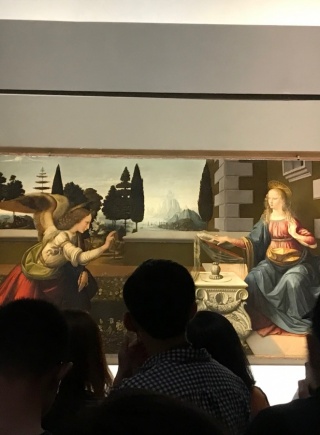 Leonardo Da Vinci at the Uffizi Gallery
Leonardo da Vinci, Tuscan by birth, has spent most of his life traveling around Italy. Many of his masterpieces are therefore scattered in v...
Read More
Leonardo Da Vinci at the Uffizi Gallery
Leonardo da Vinci, Tuscan by birth, has spent most of his life traveling around Italy. Many of his masterpieces are therefore scattered in v...
Read More
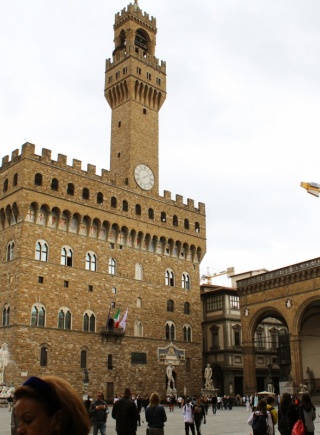 Piazza della Signoria in Florence and the fountain of Neptune
Piazza della Signoria is a real treasure chest of art treasures, in the heart of historic Florence.This famous Florentine square is home fir...
Read More
Piazza della Signoria in Florence and the fountain of Neptune
Piazza della Signoria is a real treasure chest of art treasures, in the heart of historic Florence.This famous Florentine square is home fir...
Read More
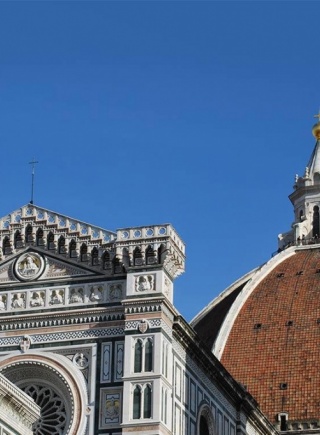 The Duomo of Florence, Santa Maria del Fiore Cathedral
The Cathedral of Santa Maria del Fiore is the fifth largest church in Christianity."Duomo" is a word that derives from the Latin "domus", or...
Read More
The Duomo of Florence, Santa Maria del Fiore Cathedral
The Cathedral of Santa Maria del Fiore is the fifth largest church in Christianity."Duomo" is a word that derives from the Latin "domus", or...
Read More
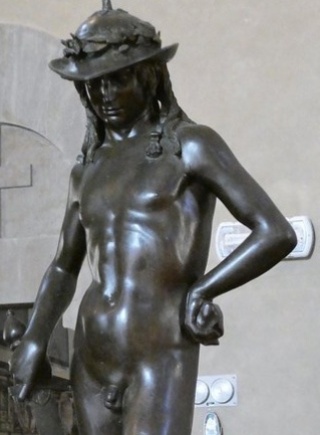 The Bargello Museum and Donatello's David
The Bargello National Museum is one of the most important Italian museums and houses masterpieces by Michelangelo, Ghiberti, Cellini, Giambo...
Read More
The Bargello Museum and Donatello's David
The Bargello National Museum is one of the most important Italian museums and houses masterpieces by Michelangelo, Ghiberti, Cellini, Giambo...
Read More
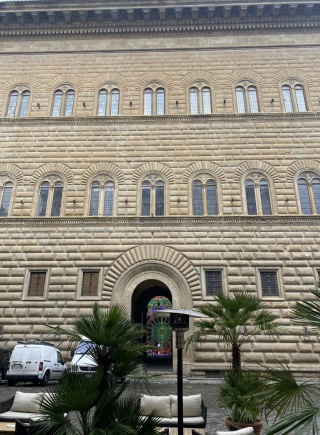 Palazzo Strozzi in Florence a timeless jewel
Palazzo Strozzi has three grandiose identical portals facing Via Tornabuoni and Piazza Strozzi. The palace was commissioned by Filippo Stroz...
Read More
Palazzo Strozzi in Florence a timeless jewel
Palazzo Strozzi has three grandiose identical portals facing Via Tornabuoni and Piazza Strozzi. The palace was commissioned by Filippo Stroz...
Read More
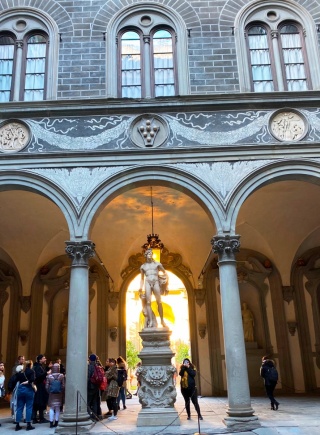 Palazzo Medici Riccardi in Florence the first Medici residence
The Medici Riccardi palace is located in the heart of Florence and is a work created by the architect Michelozzo, commissioned by Cosimo the...
Read More
Palazzo Medici Riccardi in Florence the first Medici residence
The Medici Riccardi palace is located in the heart of Florence and is a work created by the architect Michelozzo, commissioned by Cosimo the...
Read More
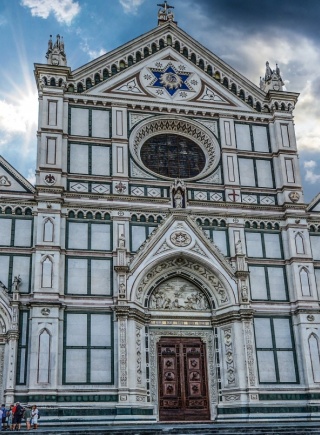 Santa Croce Basilica in Florence
The Santa Croce Basilica is located in the homonymous square in the heart of Florence. It is one of the largest Franciscan churches and undo...
Read More
Santa Croce Basilica in Florence
The Santa Croce Basilica is located in the homonymous square in the heart of Florence. It is one of the largest Franciscan churches and undo...
Read More
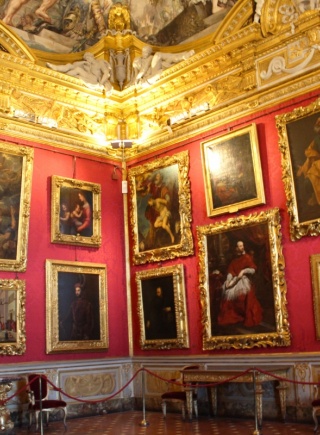 Palazzo Pitti in Florence and the Palatine Gallery
Palazzo Pitti was the palace of the Grand Duchy of Tuscany under the dynasty of the Medici family previously and the Lorraine later.Inside t...
Read More
Palazzo Pitti in Florence and the Palatine Gallery
Palazzo Pitti was the palace of the Grand Duchy of Tuscany under the dynasty of the Medici family previously and the Lorraine later.Inside t...
Read More
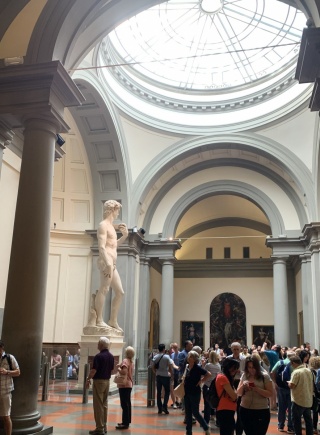 Michelangelo's David at the Academy of Florence
Michelangelo's David is an imposing sculpture in Carrara marble still considered the perfect ideal of a male figure. It is certainly made ar...
Read More
Michelangelo's David at the Academy of Florence
Michelangelo's David is an imposing sculpture in Carrara marble still considered the perfect ideal of a male figure. It is certainly made ar...
Read More
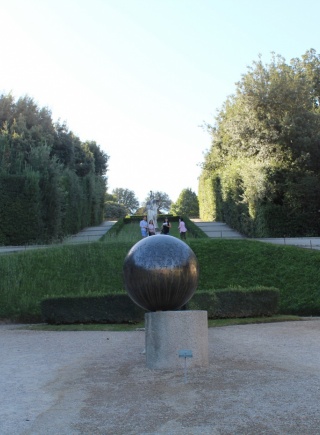 The Boboli Gardens in Florence and its wonders
The Boboli Gardens covers an area of 45,000 square meters on the hill behind Palazzo Pitti and continues down towards Porta Romana, passin...
Read More
The Boboli Gardens in Florence and its wonders
The Boboli Gardens covers an area of 45,000 square meters on the hill behind Palazzo Pitti and continues down towards Porta Romana, passin...
Read More
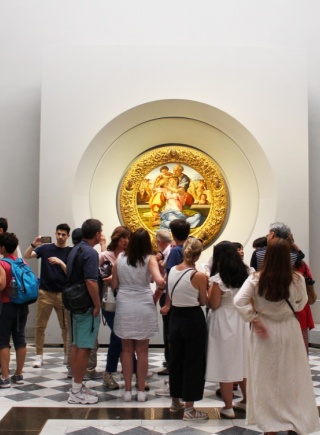 The Uffizi Gallery, the history of the largest Renaissance museum
The Uffizi Museum houses one of the most important Renaissance art collections in the world, Botticelli, Cimabue, Caravaggio, Giotto, Michel...
Read More
The Uffizi Gallery, the history of the largest Renaissance museum
The Uffizi Museum houses one of the most important Renaissance art collections in the world, Botticelli, Cimabue, Caravaggio, Giotto, Michel...
Read More
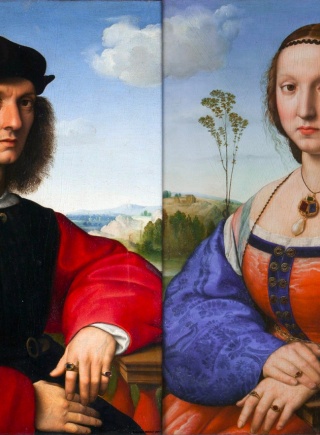 Read More
Read More
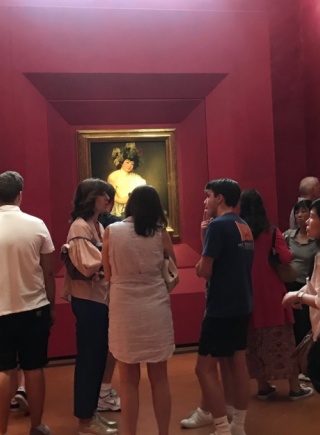 Read More
Read More
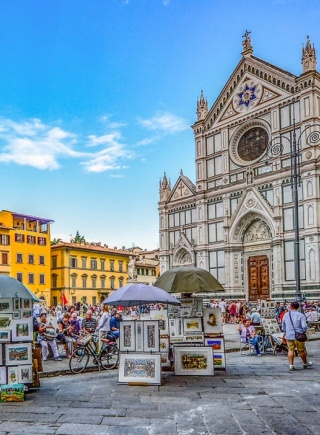 Read More
Read More
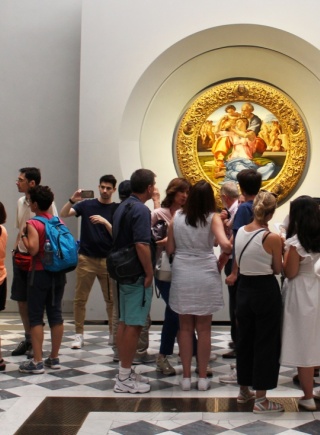 Read More
Read More
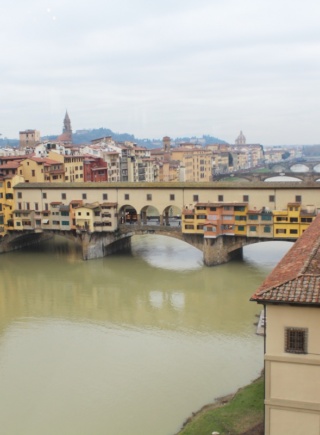 Read More
Read More
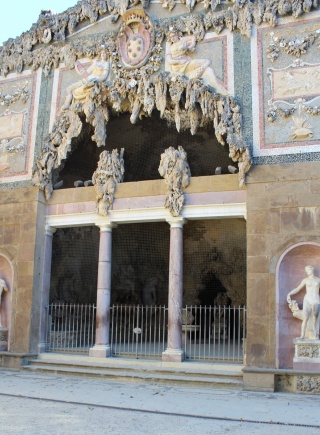 Read More
Read More
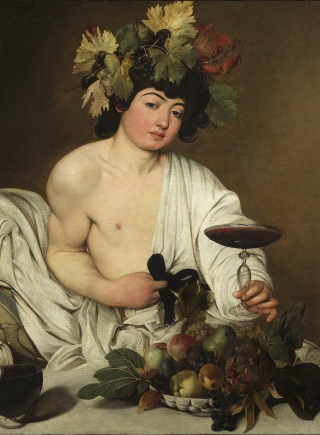 Read More
Read More
The Uffizi Gallery houses the largest collection of paintings from Romanesque period to the 18th century. Nowadays the Uffizi still accommodates famous masterpieces exhibited in chronological order


